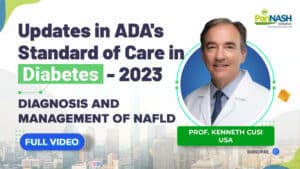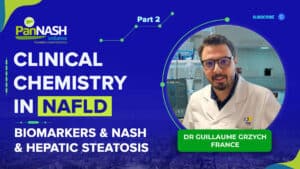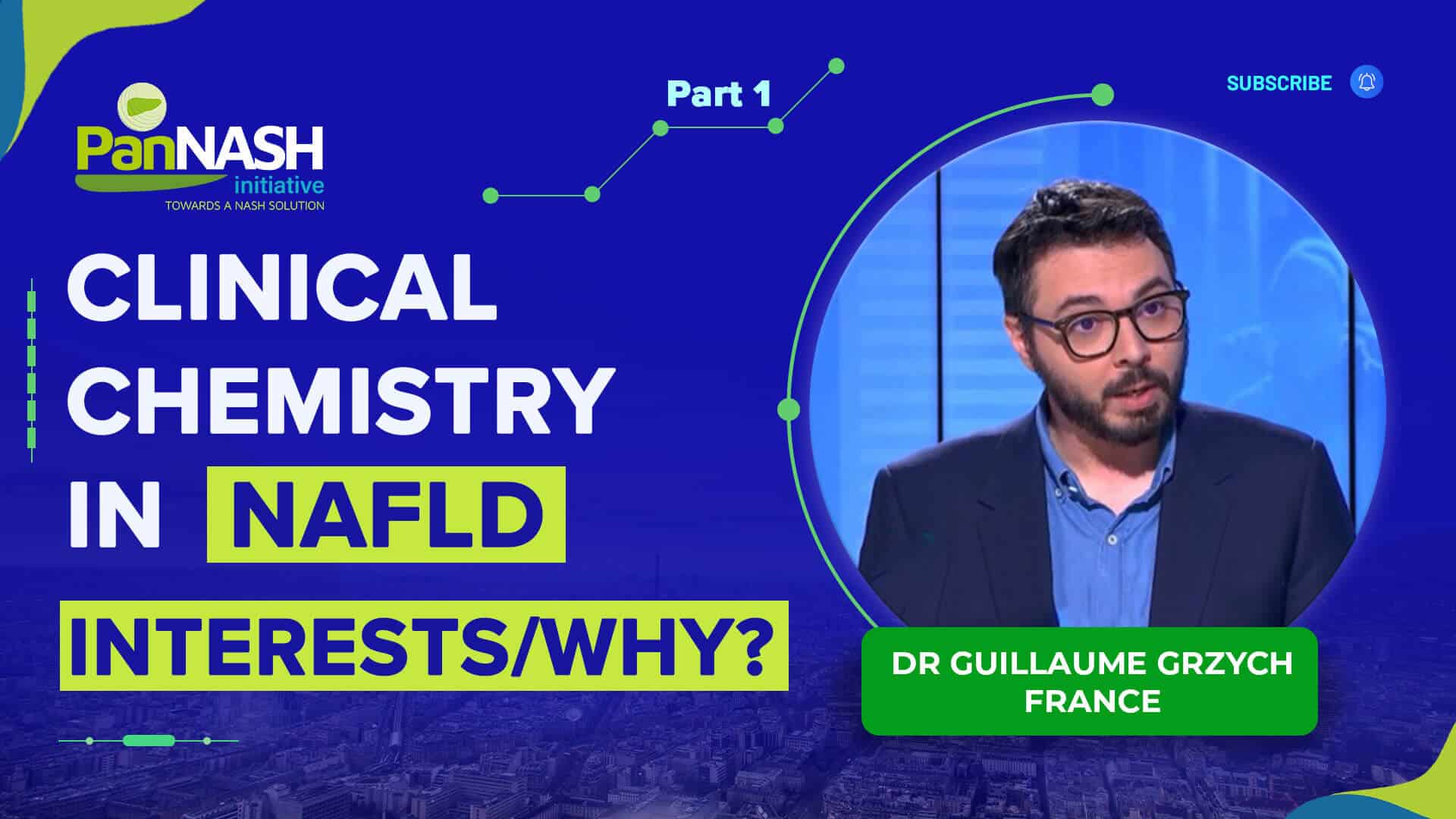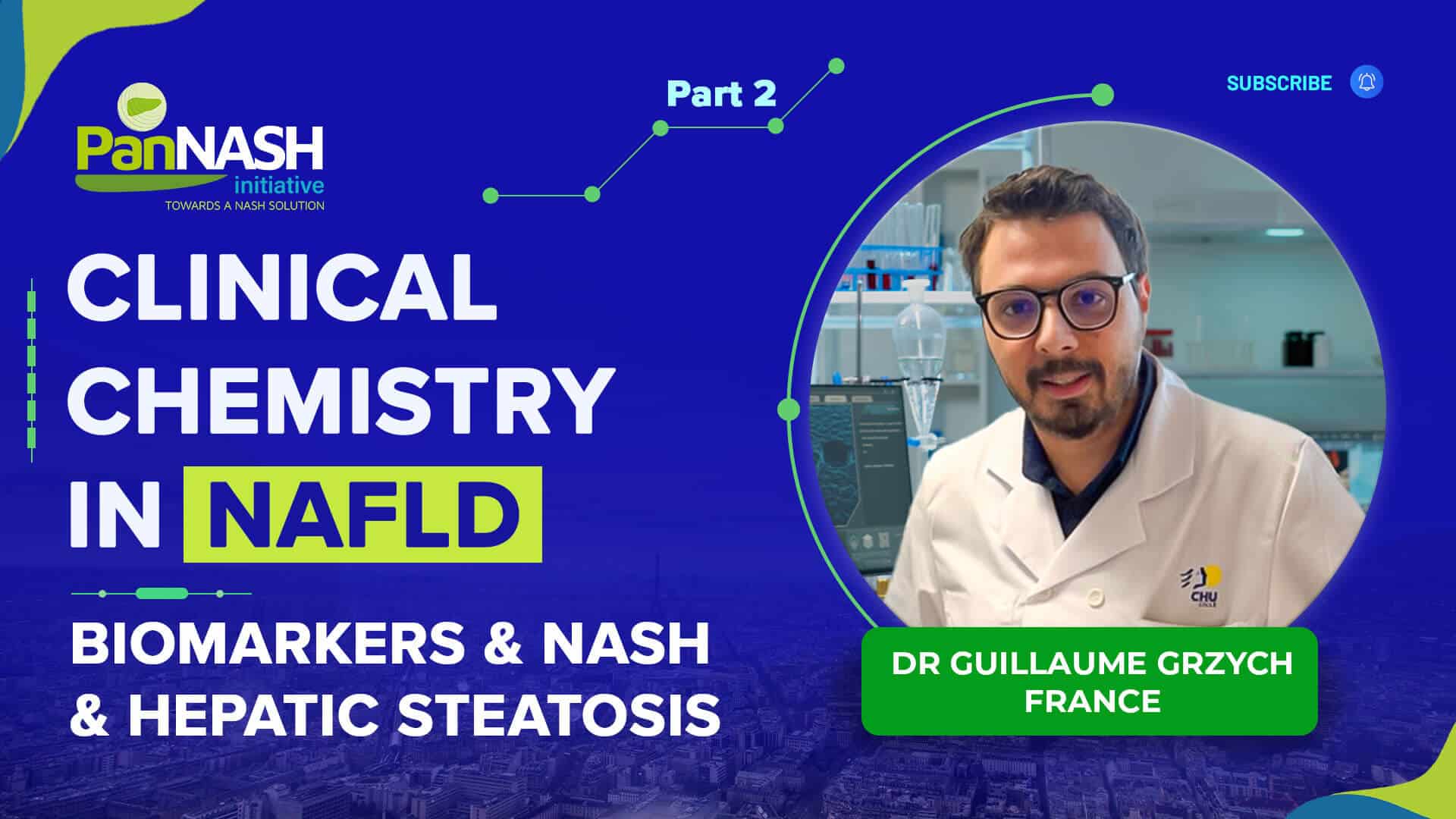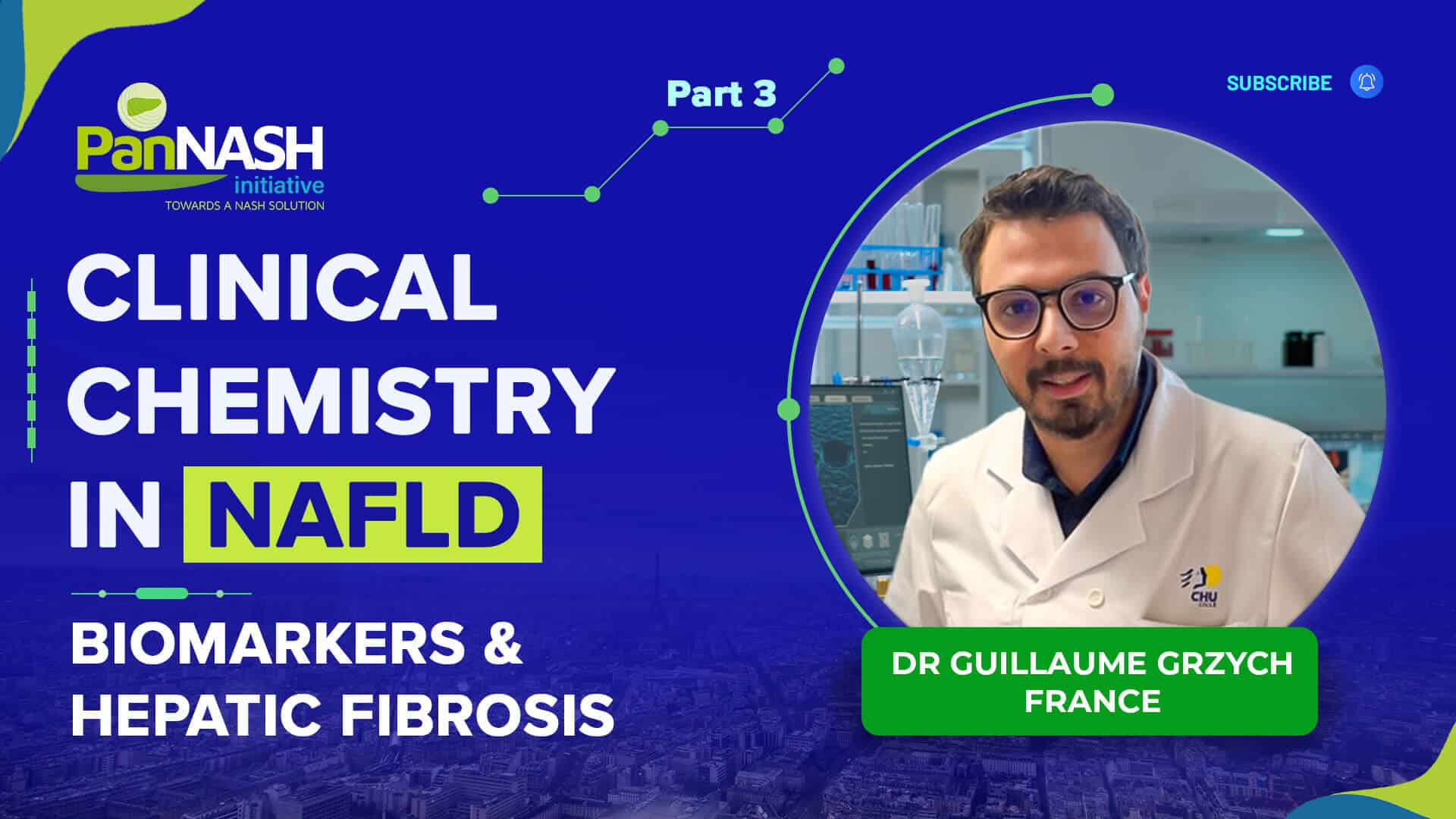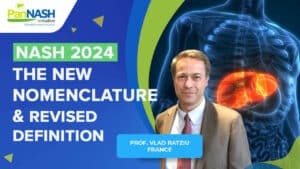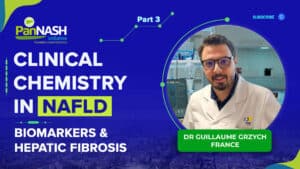Clinical Chemistry in NAFLD Part 1 – Interest and Why?
INTRODUCTION ABOUT Dr. Guillaume Grzych
In today’s critical discussion on the role of Clinical Chemistry in the landscape of Non-Alcoholic Fatty Liver Disease (NAFLD), we are pleased to have Dr. Guillaume Grzych as our esteemed guide. He serves as an Associate Professor and Hospital Practitioner at faculté de Pharmacie de Lille, where he specializes in medical biology with a focus on biochemistry.
He comes equipped with a wealth of knowledge, not only in the medical biological sciences but also in advanced computational techniques like next-generation sequencing, bioinformatics, and biostatistics. Dr. Grzych’s cross-disciplinary expertise places him at the forefront of modern medical research, and he is uniquely positioned to discuss the value and utility of biomarkers in NAFLD.
In this enlightening series, Dr. Grzych aims to shed light on the specific interests of clinical chemists in the NAFLD realm. The series is segmented into three parts, and in this first installment, Dr Grzych will delve into why biomarkers are not just useful but essential for the accurate diagnosis and effective management of NAFLD.
OVERVIEW OF Clinical Chemistry in NAFLD Part 1 – Interest and Why?
Table of Contents
- INTRODUCTION ABOUT Dr. Guillaume Grzych
- OVERVIEW OF Clinical Chemistry in NAFLD Part 1 – Interest and Why?
- Understanding the Evolving Terminology of NAFLD and its Progressive Nature
- NAFLD Prevalence and Its Association with Cardio-Metabolic Syndrome
- Understanding the Progressive Nature of NAFLD and Its Stages
- The Gold Standard for NAFLD Diagnosis
- Challenges in Histological Diagnosis of NAFLD
- Non-Invasive Methods in NAFLD Diagnosis
- The Role of Biomarkers in NAFLD
- Key Takeaways on NAFLD Biomarkers
Understanding the Evolving Terminology of NAFLD and its Progressive Nature
NAFLD (Non-Alcoholic Fatty Liver Disease) is a progressively worsening liver condition. In line with recent expert recommendations, it is also now referred to as MAFLD (Metabolic Associated Fatty Liver Disease). Adding to the ever-evolving nomenclature, the disease has also been recently labeled as MASLD.
For healthcare professionals and medical students, understanding the changing terminology is crucial for accurate diagnosis and staying current in the field.
NAFLD Prevalence and Its Association with Cardio-Metabolic Syndrome
The prevalence and incidence of NAFLD are on a steep upward trajectory globally, with recent data suggesting rates around 40%. This liver condition is inextricably linked with cardio-metabolic syndrome, making it a multi-faceted health concern.
Recent work from Younossi’s team illustrates the worldwide prevalence of NAFLD, pinpointing regions with particularly high rates. Notably, Latin America and North America stand out with persistently elevated prevalence figures.
Other continents like Europe also report high—but somewhat lesser—prevalence of NAFLD. Given that approximately 30% of the global population is affected, NAFLD is emerging as a significant global health issue. It is imperative for healthcare providers to focus on accurate diagnosis and effective follow-up for managing NAFLD.
Understanding the Progressive Nature of NAFLD and Its Stages
NAFLD is a liver condition that manifests progressively through various stages, each with its own set of complications and treatment possibilities. Initially, it presents as NAFL (Non-Alcoholic Fatty Liver), characterized by simple steatosis, which is the accumulation of fat in the liver. This stage can evolve into a more inflammatory condition known as NASH (Non-Alcoholic Steatohepatitis). Further progression may lead to liver fibrosis, a stage that’s harder to reverse.
It’s worth noting that some stages like simple steatosis can be reversible with appropriate treatment. However, conditions like liver fibrosis are more challenging to revert and could eventually evolve into cirrhosis.
Moreover, the totality of the NAFLD stages poses a heightened risk for the development of hepatocellular carcinoma and cardiovascular diseases. Given the progressive and potentially severe nature of NAFLD, it becomes critical for healthcare providers to diagnose the condition early and follow up rigorously with patients.
The Gold Standard for NAFLD Diagnosis
The reference method for diagnosing Non-Alcoholic Fatty Liver Disease (NAFLD) remains the liver biopsy—an invasive procedure. During this test, a sample of liver tissue is extracted for microscopic examination to identify various lesions that are characteristic of NAFLD stages.
Upon microscopic examination, various lesions become apparent:
- Steatosis Lesions: These are accumulations of lipid droplets within the liver cells.
- Ballooning Cells: Characterized by ballooned liver cells, visible under microscopic inspection.
- Inflammatory Lesions: Indicators of inflammation within the liver tissue.
- Advanced Stages: In more progressed cases, fibrosis lesions can also be observed.
To evaluate the stage of NAFLD accurately, healthcare practitioners employ scoring systems based on combinations of these histological lesions. Dr. Grzych cites the Bedossa scores as an example.
Initially, the degree of steatosis is assessed and scored based on its severity—ranging from no steatosis to high levels of steatosis. A similar evaluation is conducted for ballooning cells, with scores ranging from zero to two. Lastly, the presence and severity of inflammatory lesions are factored in.
By combining the scores from these three distinct categories, medical professionals can derive a comprehensive score that helps determine whether the patient is dealing with NAFL, simple steatosis, or NASH.
Given the invasive nature of liver biopsies and the need for scoring systems to stage NAFLD, Dr. Grzych emphasizes the importance of early diagnosis and appropriate follow-up for affected patients.
Challenges in Histological Diagnosis of NAFLD
Diagnosing NAFLD via histology is fraught with challenges, as Dr. Guillaume Grzych emphasizes. The subjectivity involved in interpreting biopsy results can lead to significant variations in diagnosis depending on the operator or hepatologist involved.
Various studies highlight the discrepancies between different operators in diagnosing NAFLD. For example, when a pathology report confirms the absence of NAFLD, there’s generally a consensus among hepatologists. However, there are instances where one hepatologist will diagnose NAFLD while another disagrees, attributing the variations to operator subjectivity.
This variability between operators adds an extra layer of complexity to the diagnosis. Each operator’s interpretation of what they see under the microscope can vary, affecting the final diagnosis.
Moreover, liver biopsies themselves are not without risk. Patients undergoing the procedure may experience pain, and there are potential adverse outcomes to consider.
Given these challenges and risks associated with liver biopsies, Dr. Grzych stresses the growing necessity for non-invasive methods for diagnosing NAFLD. He emphasizes that moving toward less invasive diagnostic techniques is critical for reducing risks and improving the accuracy of NAFLD diagnosis.
Non-Invasive Methods in NAFLD Diagnosis
Dr. Guillaume Grzych emphasizes the increasing relevance of non-invasive techniques for diagnosing NAFLD. One of the first non-invasive methods gaining traction is imaging techniques. These include ultrasound elastography, which measures tissue stiffness, and magnetic resonance imaging (MRI). These methods provide a safer and quicker way to detect liver lesions associated with NAFLD.
However, imaging does come with its own set of challenges. Various studies have highlighted limitations in imaging when compared to liver biopsy. The performance of these imaging techniques isn’t always on par with the traditional biopsy method. This often stems from inherent limitations associated with the imaging techniques themselves.
Furthermore, patient-specific factors can also play a role in reducing the efficacy of imaging. Dr. Grzych points out that a significant number of patients with NAFLD may also be obese. This obesity can introduce layers of fat that might interfere with imaging outcomes, especially in methods like tissue stiffness measurement.
Hence, while imaging does offer a safer and more accessible option, it’s crucial to acknowledge its limitations and continue exploring other non-invasive methods to enhance accuracy in diagnosing NAFLD.
The Role of Biomarkers in NAFLD
So why use biomarkers in NAFLD?
Biomarkers hold a unique and critical place in the evolving landscape of NAFLD diagnosis and management. Dr. Guillaume Grzych articulates the advantages of using biomarkers as opposed to other diagnostic methods. The key benefits of biomarkers are their objectivity and ability to reduce inter-operator biases. In contrast to subjective histological analyses, biomarkers offer numerical precision derived from analytical devices.
Eliminating Subjectivity and Increasing Reproducibility
One of the inherent advantages of using biomarkers is their elimination of subjectivity. The readings are based on numerical values, thereby significantly reducing the inter-operator variability. This objectivity also contributes to the reproducibility of results, which is a marked improvement over histological interpretations that can vary based on the observer.
Importance of Establishing the Right Cut-offs
The numerical nature of biomarkers necessitates the establishment of accurate cut-off points to differentiate between healthy and diseased populations. Dr. Grzych emphasizes the need for rigorous studies to evaluate the performance of these cut-off points, ensuring they are reflective of the condition being monitored.
Medical Risks and Patient Comfort
Biomarkers also have the added benefit of being less invasive than traditional liver biopsies, offering both less risk and more comfort to the patient. Blood-based biomarkers are generally preferred due to their sensitivity to biological variations and systemic expressions of the disease.
Criteria for an Effective Biomarker
A successful biomarker should meet several criteria:
- It should vary consistently with the pathology, and not with other unrelated conditions.
- It should provide insights into organ dysfunction specific to the condition at hand.
- The biomarker should be responsive at the right time in the disease progression or resolution.
- It must be compatible with an optimal biological medium, with blood often being the preferred choice.
Dr. Grzych warns against the use of urine as a medium for NAFLD biomarkers, as it could be affected by potential kidney disease or failure, thus skewing the results. The focus, therefore, remains on blood-based biomarkers for their objectivity, reproducibility, and lesser associated medical risks.
Key Takeaways on NAFLD Biomarkers
In the first segment, Dr. Grzych highlighted the importance of biomarkers in the diagnosis and management of NAFLD:
- Purpose: Biomarkers are pivotal for diagnosing NAFLD and screening specific populations. They also present an alternative to repeated biopsies for patient follow-ups, offering a less invasive monitoring approach.
- Selection: It’s essential to identify pertinent biomarkers for NAFLD, ensuring compatibility with analytical devices in medical labs.
- Performance: Issues related to repeatability and reproducibility must be addressed. An ideal biomarker should demonstrate superior performance characteristics.
- Validation: The chosen biomarker requires rigorous testing, assessing its sensitivity, specificity, and deriving the area under the AUROC. Based on this evaluation, one can finalize the biomarker score or specific markers.
Dr. Grzych concluded by noting that subsequent discussions would delve into specific markers for hepatic steatosis and NASH. He expresses gratitude for the attentive engagement and anticipates a deeper exploration in the next segment.
